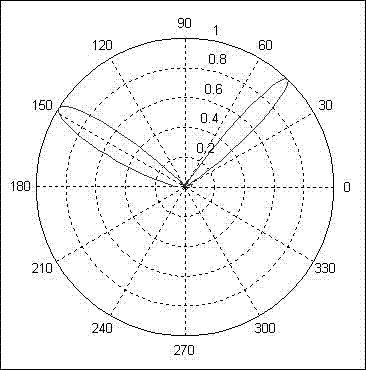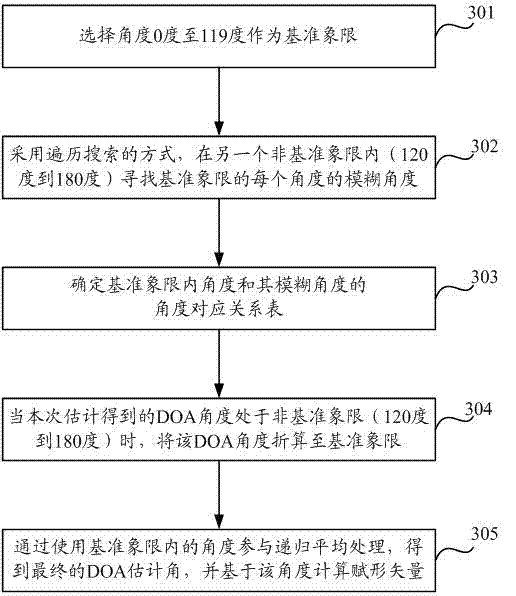Method and device for recursive average processing based on beamforming
A recursive averaging and beamforming technology, applied in the field of communication, can solve the problems of inaccurate DOA angle, affecting beamforming gain, angle blurring, etc., and achieve the effect of solving the angle blurring problem.
- Summary
- Abstract
- Description
- Claims
- Application Information
AI Technical Summary
Problems solved by technology
Method used
Image
Examples
Embodiment 1
[0033] Embodiment 1 of the present invention provides a recursive average processing method based on beamforming, which can be applied to scenarios where the antenna array spacing is greater than 0.5 times the wavelength, and can solve the angle ambiguity caused by multiple recursive average processing. accurate questions such as figure 1 As shown, the method includes the following steps:
[0034] Step 101, perform DOA estimation to obtain DOA angle X.
[0035] Step 102, judging whether the DOA angle X is an angle that can directly participate in the recursive averaging process; if yes, execute step 103; if not, execute step 104.
[0036] Step 103, use the DOA angle X to perform recursive average processing; then use the result of the recursive average processing to calculate a shaping vector for shape shaping.
[0037] Step 104, obtain the blur angle Y corresponding to the DOA angle X, and use the blur angle Y to perform recursive average processing; then, the result of the...
Embodiment 2
[0063] Based on the above application scenario, since the weighting coefficients of each array element with an antenna spacing of 0.65 wavelength will form two beams within a range of 180 degrees, resulting in the problem of angular ambiguity, based on this, Embodiment 2 of the present invention provides a beamforming-based recursive The average processing method is to determine a reference quadrant according to the range of angular ambiguity, and convert the measured angle of another quadrant to the reference quadrant, thereby solving the problem of angular ambiguity; image 3 As shown, the recursive averaging processing method based on beamforming includes the following steps:
[0064] Step 301, select an angle of 0° to 119° as a reference quadrant.
[0065] Step 302 , search for the fuzzy angle of each angle in the reference quadrant in another non-reference quadrant (120 degrees to 180 degrees) by traversal search.
[0066] In the embodiment of the present invention, the ...
Embodiment 3
[0074]Based on the above application scenario, since the weighting coefficients of each array element with an antenna spacing of 0.65 wavelength will form two beams within a range of 180 degrees, resulting in the problem of angular ambiguity, based on this, Embodiment 3 of the present invention provides a beamforming-based recursive Averaging method to resolve angular ambiguity; as in Figure 4 As shown, the recursive averaging processing method based on beamforming includes the following steps:
[0075] Step 401 , perform DOA estimation according to the DOA estimation algorithm to obtain the DOA angle X; the DOA estimation algorithm obtains the DOA angle by finding the peak value of the parameter with DOA as a function.
[0076] Step 402, compare the angle X estimated this time with the DOA estimated angle A of the previous recursive averaging process; if the difference between the angle X and the angle A is lower than the preset value (such as 90 degrees), then execute step ...
PUM
 Login to View More
Login to View More Abstract
Description
Claims
Application Information
 Login to View More
Login to View More - R&D
- Intellectual Property
- Life Sciences
- Materials
- Tech Scout
- Unparalleled Data Quality
- Higher Quality Content
- 60% Fewer Hallucinations
Browse by: Latest US Patents, China's latest patents, Technical Efficacy Thesaurus, Application Domain, Technology Topic, Popular Technical Reports.
© 2025 PatSnap. All rights reserved.Legal|Privacy policy|Modern Slavery Act Transparency Statement|Sitemap|About US| Contact US: help@patsnap.com



